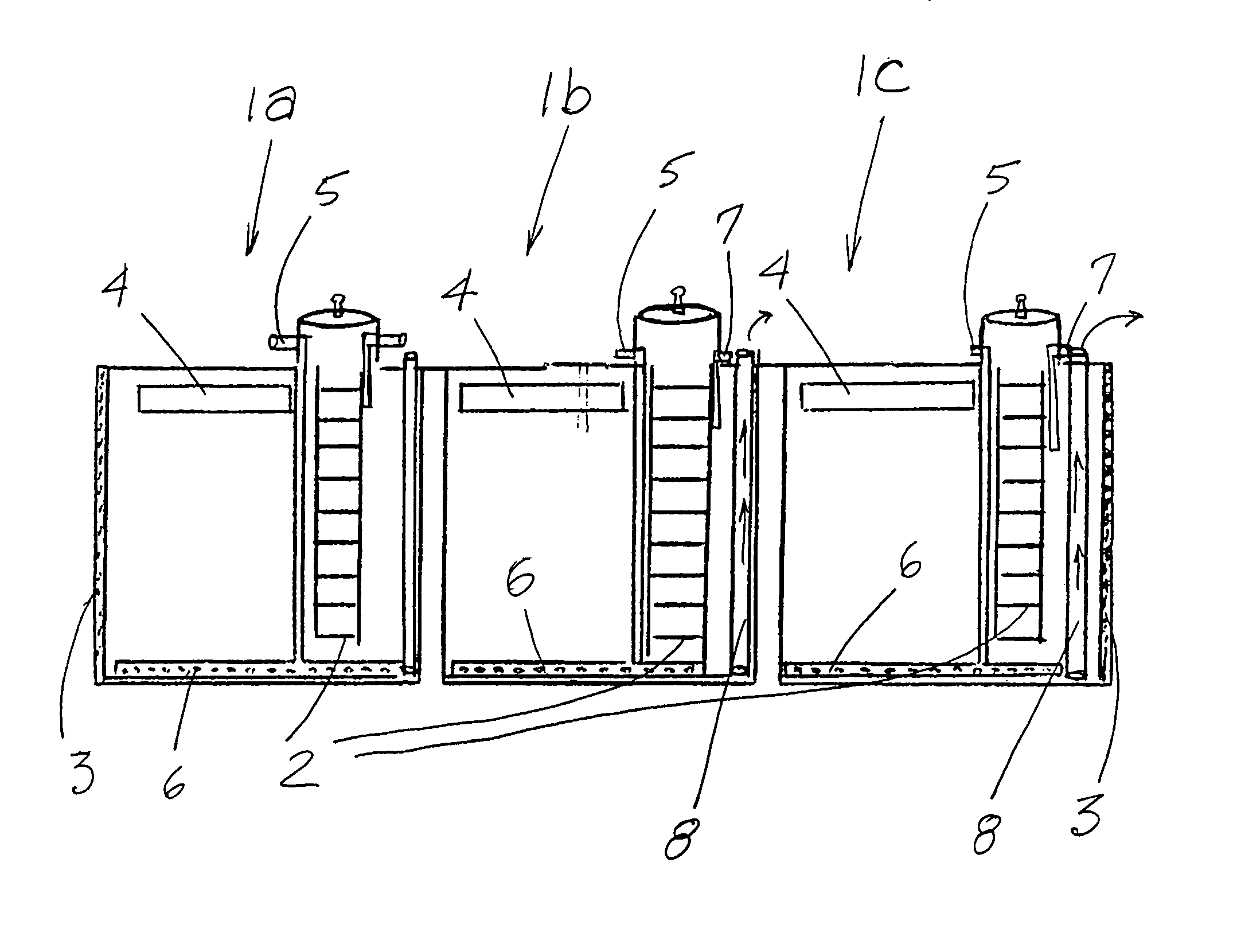Method of establishing clam bed colonies and mobile floating hatchery for implementing same
a technology of clam beds and hatcheries, which is applied in pisciculture, climate change adaptation, application, etc., can solve the problems of increasing the population of clams, not being satisfied, and scientific efforts failing to provide an adequate method of repopulating clam beds
- Summary
- Abstract
- Description
- Claims
- Application Information
AI Technical Summary
Benefits of technology
Problems solved by technology
Method used
Image
Examples
Embodiment Construction
[0015]A method is described for establishing a clam bed at a desired location in bays and other suitable aquatic locations. In accordance with the method, clam larvae are raised in a protected environment in which they are provided with adequate food and habitat requirements, and kept isolated from predation by natural predators. The clam larvae are maintained in this environment throughout the first larval stage, referred to as the trochophore stage of development, when the larvae are particularly vulnerable to mortality. During the next stage of development, which, depending on water temperature, is believed to occur between about 7 to 14 days after fertilization (formation of zygotes) the larva is called a veliger, because it has a velum (Latin: “curtain”), a sail-shaped organ that extends from the miniature larval shell which is forming. This structure helps, among other things, to enable the clam to be mobile in the water. At this point (i.e., the veliger stage, referred to alt...
PUM
 Login to View More
Login to View More Abstract
Description
Claims
Application Information
 Login to View More
Login to View More - R&D
- Intellectual Property
- Life Sciences
- Materials
- Tech Scout
- Unparalleled Data Quality
- Higher Quality Content
- 60% Fewer Hallucinations
Browse by: Latest US Patents, China's latest patents, Technical Efficacy Thesaurus, Application Domain, Technology Topic, Popular Technical Reports.
© 2025 PatSnap. All rights reserved.Legal|Privacy policy|Modern Slavery Act Transparency Statement|Sitemap|About US| Contact US: help@patsnap.com


